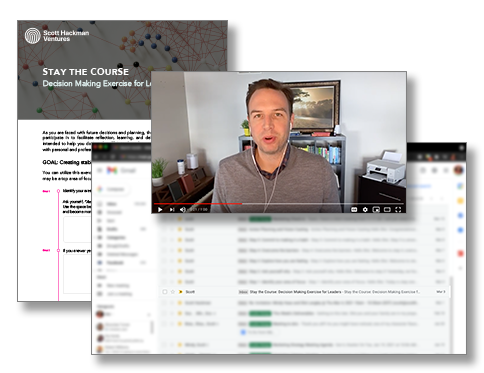Leaders of teams can use this process to guide the transition and lead change
According to William Bridges, “Change is the external event or situation that takes place: a new business strategy, a turn of leadership, a merger or a new product. The organization focuses on the desired outcome that the change will produce, which is generally in response to external events.
”Transition, on the other hand, is identified as, “The inner psychological process that people go through as they internalize and come to terms with the new situation that the change brings about.”
It’s inevitable that both change and transition are two things each individual and organization will experience time and time again. While this is an event that requires work on an internal and external level, ,it’s important for leaders to recognize that change will only be successful if leaders and organizations address the transition that people experience during change.
Decision making can often become a challenging and crippling process for leaders within organizations. This struggle may come from the desire to please all of the stakeholders involved and as a result, there’s frequently friction that builds, lack of trust and leaders feel stagnate rather than moving forward towards their personal and organizational goals.
As a coach, I use a three-step process to help all parties come into alignment. It begins with an initial meeting with all stakeholders before transitioning to 1:1 meetings on smart goals, followed by a debriefing. This typically begins in quarterly phases eventually, moving to semi-annual meetings. The outcome goal is always based on the specific business challenges and objectives. That’s why we work closely with each key stakeholder to identify the proper outcome goal.
Let’s take a closer look at the process:
Step 1: Initial alignment meeting with all key stakeholders.
· Review SWOT (Strengths, Weaknesses, Opportunities & Threats)
· Align on one goal to work towards collectively and individually.
Step 2: 1:1 coaching with each stakeholder to:
· Review SMART goal.
· Report progress.
· Coach through challenges for insights and next steps.
Step 3: Debrief meeting with all stakeholders.
· Review progress on SMART goals.
· Align on next priority.
· Draft a SMART goal for alignment and coaching.
Leaders of teams can use this process to guide the transition and lead change. Recognizing that there is a human and more importantly, emotional process of letting go during the transition process allows them to better support their team members. For example, for some members of the team, grief may be a gift that they have not experienced before. Through proper leadership, these team members can begin to realize it’s something to recognize rather than shame or fear. When grief is recognized as normal it can guide what you listen for so that people move from a sense of scarcity to abundance.
Organizations often choose to continue coaching until, collectively as a whole, they are able to better grasp priorities and next steps. This is a process that can be repeated for each change and transition that occurs. I facilitate the process as a third-party and coach to overcome challenges and identify barriers to success.
I would love the opportunity to work along-side you and your team as you navigate through change and transitions. Please reach out to us: [email protected] and we can determine the best course of action for your situation!


Scott Hackman is the Founder and CVO of Scott Hackman Ventures. He has over 15 years of experience in business advising, coaching, and leading growth through transitions.
Meet Scott.



